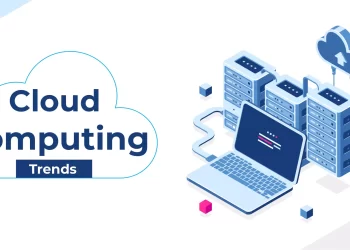Cloud technologies let users access files, storage, databases, servers, software, analytics, intelligence, etc, through internet/cloud-connected devices. This empowers businesses with refined infrastructure, leverages powerful software, and stays updated with major technological advancements without significant investment.
Such cloud software has vastly transformed how industries store and access data. Its primary job is to deliver computing service over the internet, allowing users to access information from remote locations seamlessly.
Cloud technologies are classified into the following:
- Infrastructure as a service (IaaS) puts forward virtual computing services, providing users control over operating systems and applications.
- Platform as a Service (PaaS) presents a platform that deploys and builds applications without impacting the infrastructure.
- Software as a Service (SaaS) supplies software over the Internet, eliminating the need for installation.
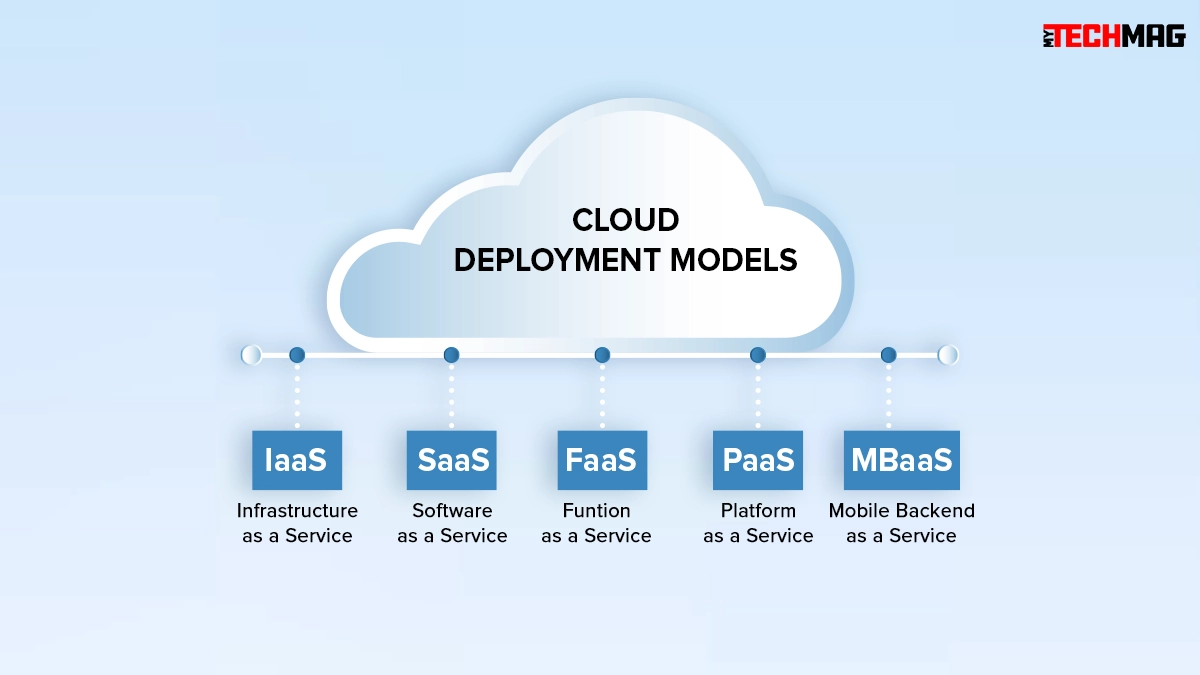
All of these provisions offer considerable flexibility, efficiency, and scalability in data management, making it a critical tool for numerous businesses. It has significantly revolutionized technology and continues to make ongoing contributions to the transformation of software development worldwide.
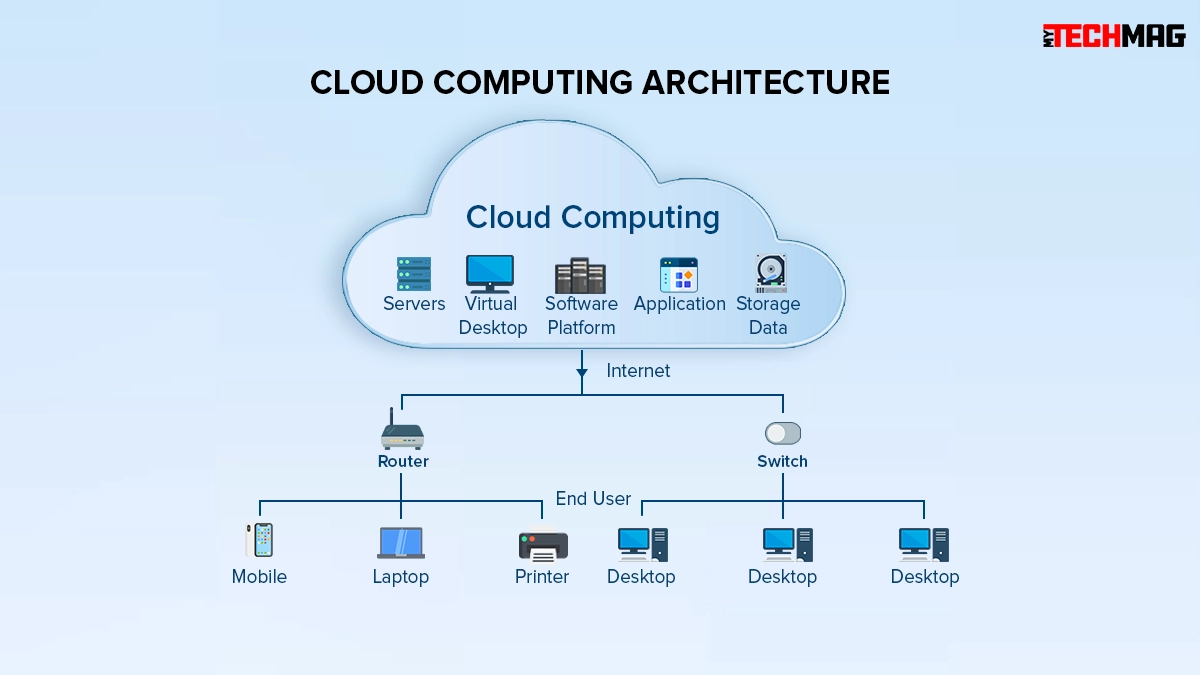
Our article will touch upon some crucial points, such as traditional software development and its challenges, how cloud technology is revolutionizing software development, how renowned organizations have drawn practical benefits from cloud software development, what will be the considerable future advancements and challenges in this area.
Let’s jumpstart learning in-depth about it.
What is Traditional Software Development?
Traditional software development was created for simple innovation. It was mainly used when security was not a concern and the development process did not involve complexity. It comprises the five simple stages, and they are as follows:
- Requirements analysis
- Design
- Implementation
- Coding and Testing
- Maintenance
Challenges of Traditional Software Development:
Traditional software development is slowly being replaced by cloud software/application development, and here are some of the reasons why:
1. Compartmentalized Infrastructure and Limited Resources:
Traditional software development teams are isolated for siloed infrastructure and undergo limited interaction. Unfortunately, a lack of collaboration leads to the duplication of efforts and increases inefficiencies in performance. Moreover, constrained and finite resources lead to bottlenecks in project progression. These concerns make it immensely challenging for organizations to innovate at a scale and adapt to rapidly growing market trends.
2. Slow Deployment Cycles and Maintenance Complexities:
The waterfall method is one of the traditional software development methods, and its significant inconveniences were its linear structure and rigidity. Other conventional software development processes have slow deployment processes, as every step must be completed appropriately to start the next step. Due to this, complexities are addressed post-deployment, which is time-consuming and costly. The inflexibility of the traditional software development method makes adapting to spontaneous challenges difficult. One of the most significant risks of conventional software development methods is project failure, which is tested upon completion.
3. Lack of Scalability and Adaptability to Changing Demands:
As we mentioned earlier, the process is rigid and linear. Additionally, any change can result in delays and cost overruns as it requires extensive attention. Therefore diminishing the scalability and adaptability of the entire process.
4. Security Concerns and Data Management Challenges:
The traditional software development lifecycle process doesn’t incorporate secure coding into methodologies and may not include security testing. Considering the scenario, it is understood that security is often an afterthought in the process. This disconnect between actual developers and management is immensely vast when it comes to application security.
How Cloud Technology is Revolutionizing Software Development?
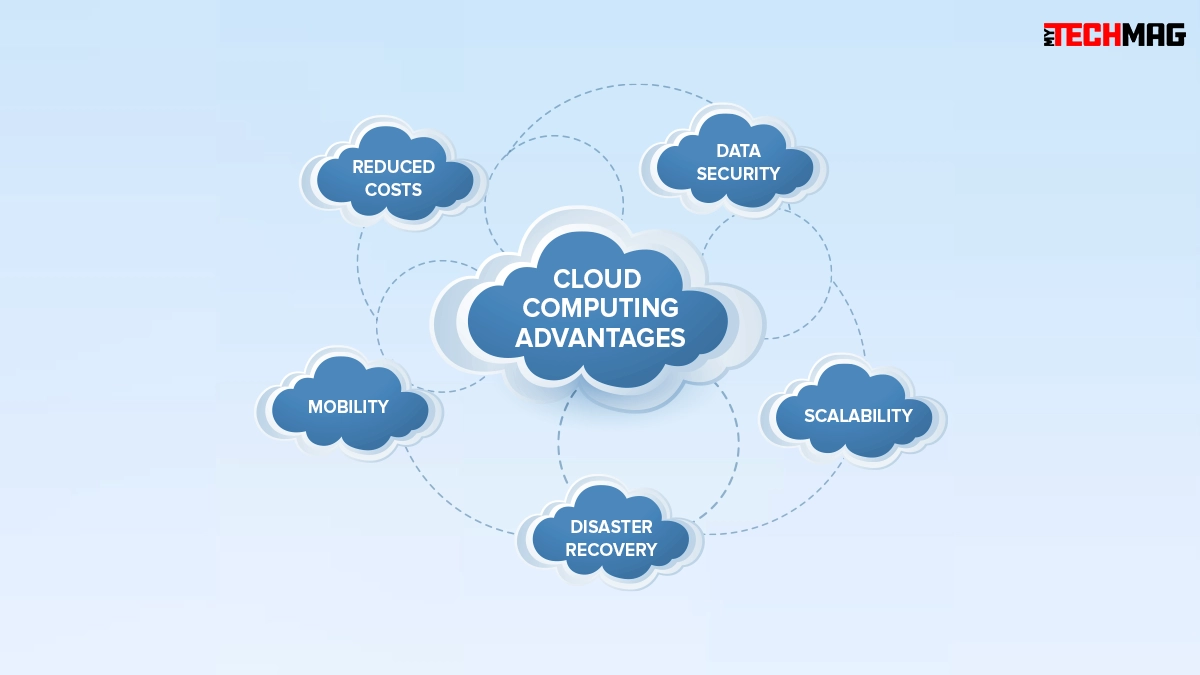
Cloud technology is revolutionizing software development by providing easy access to tools and services, which has transformed software development. Now, organizations do not need costly infrastructure as they can deploy applications to the cloud, enabling resource allocation and remote access flexibility. Cloud computing also provides the benefit of comprehensive software testing across multiple platforms and environments feasible for improved compatibility. Additionally, collaborating with a geographically dispersed team is smooth like butter, considering all the project members use the same tool. Overall, cloud computing has simplified the streamlining of the development and deployment process, making it more cost-effective, scalable, and efficient. Let’s look into them in detail:
1. Increased Agility and Scalability:
Making use of Cloud computing in the domain of software development has become instrumental in improving scalability and agility. Resources required on demand are available instantly, eliminating the limitations of the traditional hardware and ensuring developers can adapt to varying workloads. With cloud technology, automatic scaling is possible on demand to handle all kinds of drops and spikes in workload to ascertain optimal performance. Lastly, the development and deployment process is also faster, entailing a quicker delivery of solutions. This technological advancement empowers software development with superior software solutions, leading to unparalleled efficiency and flexibility.
2. Enhanced Collaboration and DevOps:
Cloud technology leverages crucial aspects of software development, such as enhanced collaboration and DevOps. Cloud technology provides shared developmental areas accessible via the internet; developers can seamlessly work together irrespective of their geographical location. Therefore, teams experience synergistic and improved collaborations. Another exciting feature of cloud computing is continuous integration and continuous delivery (CI/CD) pipelines, accelerating increased efficiency and development cycle. Reports suggest that companies using DevOps in the cloud experience a 63% improvement in software deployment frequency. Therefore, software development organizations embracing cloud technology revolutionize how their teams collaborate to drive innovation and growth.
3. Improved Cost Efficiency:
Organizations capitalizing on cloud software development experience improved cost efficiency. It is incorporated with the pay-as-you-go model that significantly reduces the upfront cost, enabling organizations to scale funds as per demand, leading to enhanced budget control. Furthermore, traditional software development involved hardware maintenance, which was inherently time-consuming and costly. On the other hand, cloud computing provides access to computing resources as and when required, making idle time negligible. Information shows that cloud computing users decrease the operational cost by 20%. Now, developers can unleash the real power of cloud computing as they only need to focus on coding and deploying, and managing infrastructure is no longer a concern.
4. Enhanced Security and Reliability:
Security and reliability are of utmost importance in the realm of software development. This parameter makes cloud computing stand out from traditional software development. It is developed with built-in security features and adheres to stringent compliance standards to ensure your data is safely guarded against possible threats. It is also supplemented with data backup solutions and disaster recovery, diminishing data loss chances. The particular cloud computing infrastructure presents uninterrupted access to applications and data and ensures high availability. By 2025, it is expected that 85% of enterprises will depend on cloud computing, as the technology is a testament to its reliability and robustness. Businesses looking for an unmatched level of security and reliability have started using cloud computing.
Case Studies of Organizations Using Cloud Software Development:
It’s incredible to observe how cloud software development companies are making a real difference for organizations globally. They’re stepping up the process of leveraging cloud software development. What are the results? Massive boosts in efficiency, significant cost reductions, and accelerated growth of businesses.
Let’s dive into some real-life benefits these organizations have experienced using cloud software.
1. Netflix
It is a renowned American streaming service provider that broadcasts original and acquired TV shows worldwide. Netflix has implemented Amazon web services to facilitate its large-scale global streaming platform. The cloud-first approach has benefited Netflix, enabling rapid deployment, seamless streaming for millions of users, and on-demand infrastructure scaling.
2. General Electric (GE)
Founded in 1892 with headquarters in Boston, this organization have several divisions: finance, manufacturing, renewable energy, aerospace, digital industry, and more. It is a multinational conglomerate and has transitioned from IT infrastructure to cloud services with the support of AWS and Microsoft Azure services, helping GE enhance work efficiency, reducing the cost of development and deployment of IoT solutions across multiple industries.
3. Airbnb
It is an American company that operates online homestays for short and long-terms, founded in 2008. It is now utilizing AWS to manage its massive data and applications. With the support of cloud services, the organization could streamline its operations, scale rapidly, develop innovative features, and enhance user experience & satisfaction.
4. Shell
It is a British Multinational oil and Gas Company listed publicly and headquartered in London. The organization partnered with Microsoft Azure to quicken its digital transformation initiatives and business processes. Shell improved its operational efficiency by migrating applications and data to the cloud, which increased their AI and data analytics capabilities and reduced IT costs.
5. Coca-Cola
One of the renowned brands in the world widely selling soft drinks. This global beverage giant collaborated with Google Cloud Platform (GCP). By Capitalizing on Google’s cloud services, Coca-Cola has upgraded its global analytics capabilities, provided personal experiences to its clientele, and enhanced its supply chain efficiency.
It is best to learn from the success stories of exceptionally renowned companies mentioned and implement cloud technologies into your organizational process. Learning through others’ experiences highlights new strategies, maximizes benefits, and provides guidance for the successful adoption of new technologies.
The Future of Cloud-Based Software Development:
The rate of change is enormously fast when cloud software development is considered. Every other day, new features and capabilities are added to its list. As the momentum of cloud computing is soaring, let’s find out some of the new trends and advancements in the field that organizations can experience in the future.
1. Multi-cloud
Multi-cloud will become a norm shortly because, presently, numerous businesses use the cloud to care for specific business requirements. A hybrid cloud format will co-exist because most of the work will be shifted to the cloud. Therefore, the future cloud will combine multi-cloud and hybrid to push agility, flexibility, control, and security.
2. Internet of Things (IoT)
The future of cloud computing is meticulously in sync with the Internet of Things. As technological advancement continues, many devices will be connected to the internet. To make it more scalable and reliable. The IoT will create a gigantic amount of data needing storage and processing, making the cloud a perfect combination.
3. Serverless Computing
This particular technology will completely change how applications are hosted as no physical service must be maintained; alternatively, a code is executed to trigger events with all infrastructure managed by the cloud. It will simplify deployment and reduce costs. Serverless computing is in the early stages of experiments but shows promising results upon scaling for cost-effective cloud-based solutions.
4. Edge Computing
Cloud has its advantages. At the same time, businesses relying on its services are highly vulnerable to internet disruption. That’s why edge computing is gaining a lot of attention, as it enables the processing of data locally than on the cloud. It contributes to finer work by reducing latency and increasing resilience and security. Additionally, it is significantly cost-effective, allowing edge computing to have a more prominent presence in the future.
5. Service Mesh
This technological advancement in cloud computing separates individual services for more straightforward monitoring and management. The feasibility enables the identification of a concern faster. Hence, remedy action is also set in action immediately. It is also heavily supplemented with auto-scaling features and load balancing for optimal scalability and efficiency.
Challenges of Cloud Computing that One Must Take Note of While Learning About the Emerging Trends!
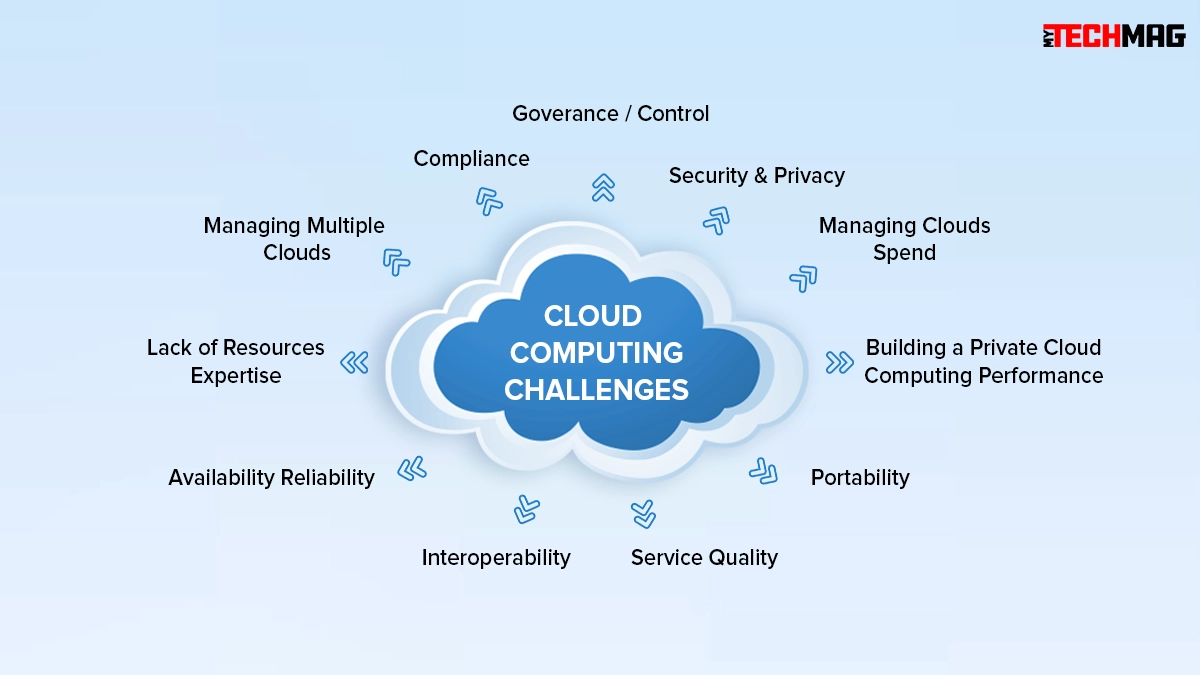
According to a survey by Flexera, which gathered insights from 750 cloud decision-makers, One significant challenge was managing the cloud spending for small businesses and large enterprises. Numerous organizations are investing in cloud computing to stay competitive. The challenges are different from one organization to another, so we have listed a few concerns that organizations may experience or need help with:
- Compromised credentials
- Broken authentication
- Human error
- Mass sensitive data breaches
- Hacked interfaces and APIs
- Account hijacking
- Governance/Control
- Compliance
- Network dependence
- Building a private cloud
Many other challenges can be on the way, but they will only be discovered and addressed with more software usage. So, the challenges should not stir away the consideration of whether an organization should incorporate cloud computing, as the benefits are way more significant than the challenges.
Conclusion:
Taking all you learn throughout the blog, you can safely say that cloud computing development has transformed businesses by enabling cost-saving, scalability, and agility. Any IT organization gradually shifting or ultimately shifting to cloud computing is taking the right step towards the growth of their venture as the software helps to innovate in the digital landscape. Furthermore, the continuously evolving technology will furnish and refine the software development journey.
https://idikalimantanselatan.org/
https://idikalimantanselatan.org/
https://disdukcapil.salatiga.go.id/wp-content/uploads/eleslot/
https://disdukcapil.salatiga.go.id/wp-content/uploads/eleslot/
Gracie Johnson is a Senior Content Writer at MyTechMag. She is an enthusiastic learner and loves to explore all the areas of technology.



